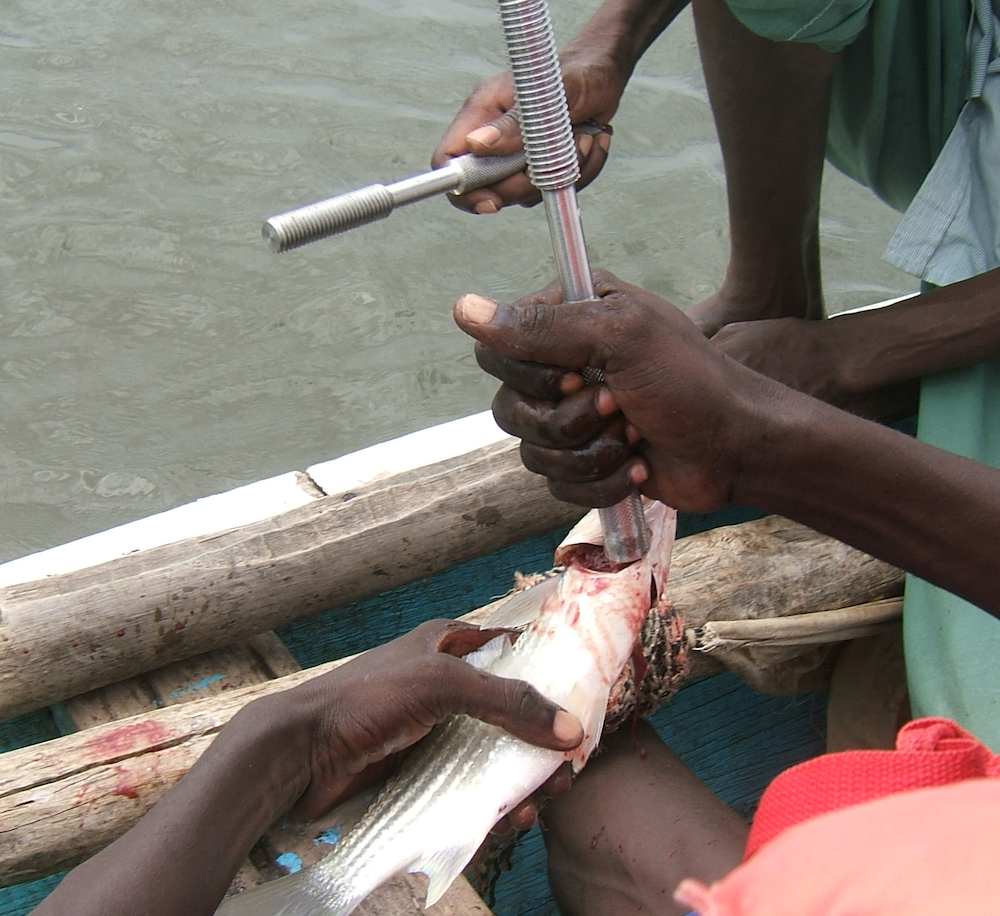
Beach seine in Saloum, Senegal: According to the fair-fish rule, the net is pulled away from the beach and into individual compartments. At the latest thirty minutes after no escape was possible, the last fish is caught, stunned and killed. (Photos: Studer / fair-fish)
Catch as gently as possible
Wild fish live in a species-appropriate way—as long as we do not damage their habitat through climate change, sewage and waste, or constrict them through buildings and shipping traffic.
The intervention in the well-being of the fish by catching them, on the other hand, is massive, especially in industrial fishing. They are being pulled through the water for hours on long lines that are dozens of kilometres long and equipped with thousands of hooks. In large trawl nets they are squeezed tightly together as a shoal. In the fine meshes of gillnets, they get tangled up in an escape struggle that lasts for hours. And in all cases they are brought on board more or less alive, where they are either left to suffocate or filleted without anaesthesia.
fair-fish wants to work towards ensuring that captivity lasts as short a time as possible, and that every fish is stunned and killed immediately after it is taken out of the water. More on this in our guidelines.

